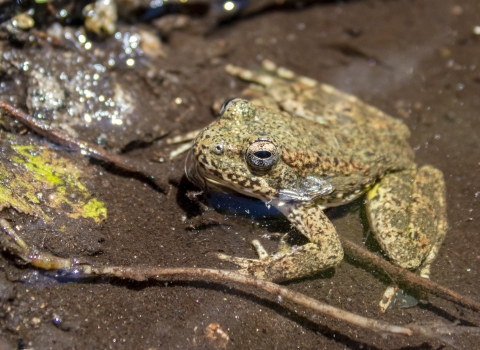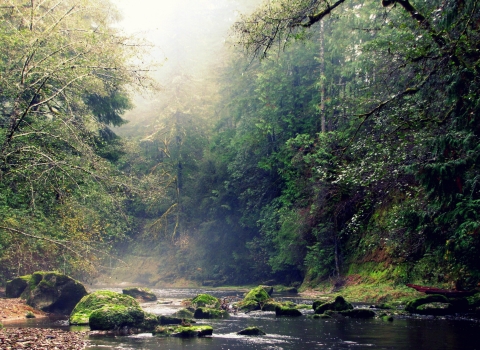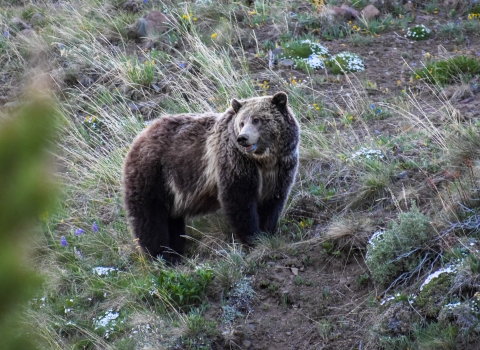Vulnerable wildlife across the nation will benefit from more than $7.4 million in grants thanks to the U.S. Fish and Wildlife Service’s Competitive State Wildlife Grants (C-SWG). Since 2008, the C-SWG program has provided over $103 million in federal grant funds to states, commonwealths, territories, and the District of Columbia to benefit fish and wildlife and their habitats, especially species at risk of declining or becoming threatened or endangered.
“State and territory fish and wildlife agencies are essential partners in protecting America’s wild places and wildlife for future generations,” said Service Director Martha Williams. “These grants will help them conduct important work to promote recovery of wildlife and their habitat for those most in need of help and we are proud to support their work.”
This year’s projects will fund a variety of conservation activities including translocating the federally endangered Hawai’ian honeycreeper ʻākohekohe, expanding a network of automated radio telemetry receiving stations to track species like butterflies and bats, implementing conservation efforts for vulnerable turtle species, and assessing species’ climate vulnerability.
These projects will help support the America the Beautiful initiative by working to conserve, connect and restore our nation’s lands, waters, and wildlife with locally led and locally designed conservation efforts and restoration approaches.
The Service’s Office of Conservation Investment, which administers the C-SWG program, will fully fund 15 projects that advance conservation and species recovery. The projects were selected from a nationally competitive slate of proposals to address priorities identified in each agency’s Wildlife Action Plan. Every state, commonwealth, territory, and the District of Columbia develops and maintains these plans to manage species and meet local and unique stewardship needs. These plans identify and prioritize actions to conserve species most in need of conservation measures, termed species of greatest conservation need, which often include those at risk of population decline or becoming listed as threatened or endangered.
The C-SWG program facilitates interstate collaboration and species conservation at regional and national levels, encouraging recipients to collaborate with tribal and nongovernmental fish and wildlife managers and other experts to create landscape and nationwide conservation networks. The 2024 primary recipients include fish and wildlife agencies in the Commonwealth of the Northern Mariana Islands, Guam, Hawai’i, Iowa, Michigan, Minnesota, Nebraska, North and South Carolina and Wisconsin. The Western Association of Fish and Wildlife Agencies also received an award that will be distributed to California, Idaho, Oregon, and Washington. These state fish and wildlife agency recipients and their partners will contribute $2.4 million in non-federal funds to support the selected projects. With these combined funds nearly $10 million in total will help conserve and protect declining species and their habitats.
Examples of this year’s funded projects include:
- Partners in Hawai’i will establish a second population of the federally endangered Hawai’ian honeycreeper ʻākohekohe on Hawai’i Island as a safeguard against potentially damaging weather events and disease threats that are intensifying due to climate change climate change
Climate change includes both global warming driven by human-induced emissions of greenhouse gases and the resulting large-scale shifts in weather patterns. Though there have been previous periods of climatic change, since the mid-20th century humans have had an unprecedented impact on Earth's climate system and caused change on a global scale.
Learn more about climate change . Current research indicates the species could become extinct as early as 2026 without swift conservation action. Supported with C-SWG funds, project partners will conduct essential studies to improve and refine management methods for ʻākohekohe. Funding will support the project’s co-leads, the Hawai’i Department of Land and Natural Resources and the University of Hawai’i Pacific Cooperative Studies Unit. - Through the Western Association of Fish and Wildlife Agencies, project partners will utilize C-SWG funds to track the migratory and movement pathways of four key species: monarch butterfly, hoary bat, silver-haired bat and western purple martin. To achieve this, partners will expand the Motus Wildlife Tracking System to gain insights into at-risk species’ migratory behaviors, enabling researchers to track the movements of wildlife. Cooperating fish and wildlife agencies, WAFWA, and the American Bird Conservancy will install 30 new radio telemetry receiving stations and retrofit 50 existing stations with new receivers.
- Partners in Michigan and Ohio will use C-SWG funding to collect key information on the status, distribution, and ecology of Blanding’s and spotted turtle populations to inform and prioritize management efforts. Both species have experienced range-wide declines and are currently in review for potential federal listing under the Endangered Species Act. Data and other key information generated through this project will be shared to contribute to range-wide recovery efforts for these declining species, continuing the states’ successful partnership to conserve at-risk turtles at a large landscape scale. Funding for this project will also support the project’s co-leads, the Michigan and Ohio Departments of Natural Resources.
The C-SWG program is part of the larger annual State Wildlife Grant Program, which in April apportioned a total of a $59 million in funding to every state, commonwealth, territory and the District of Columbia to advance conservation and protect vulnerable wildlife according to a formula based on geographic area and population size. For more information, visit: www.fws.gov/program/state-wildlife-grants
The U.S. Fish and Wildlife Service works with others to conserve, protect and enhance fish, wildlife, plants and their habitats for the continuing benefit of the American people. For more information, visit www.fws.gov and connect with us on social media:
Facebook, Instagram, Twitter, LinkedIn, Flickr, and YouTube.



